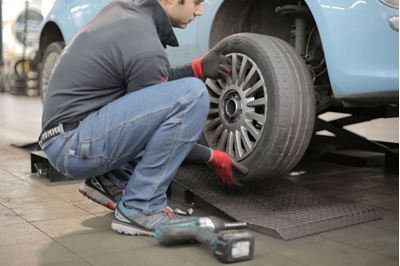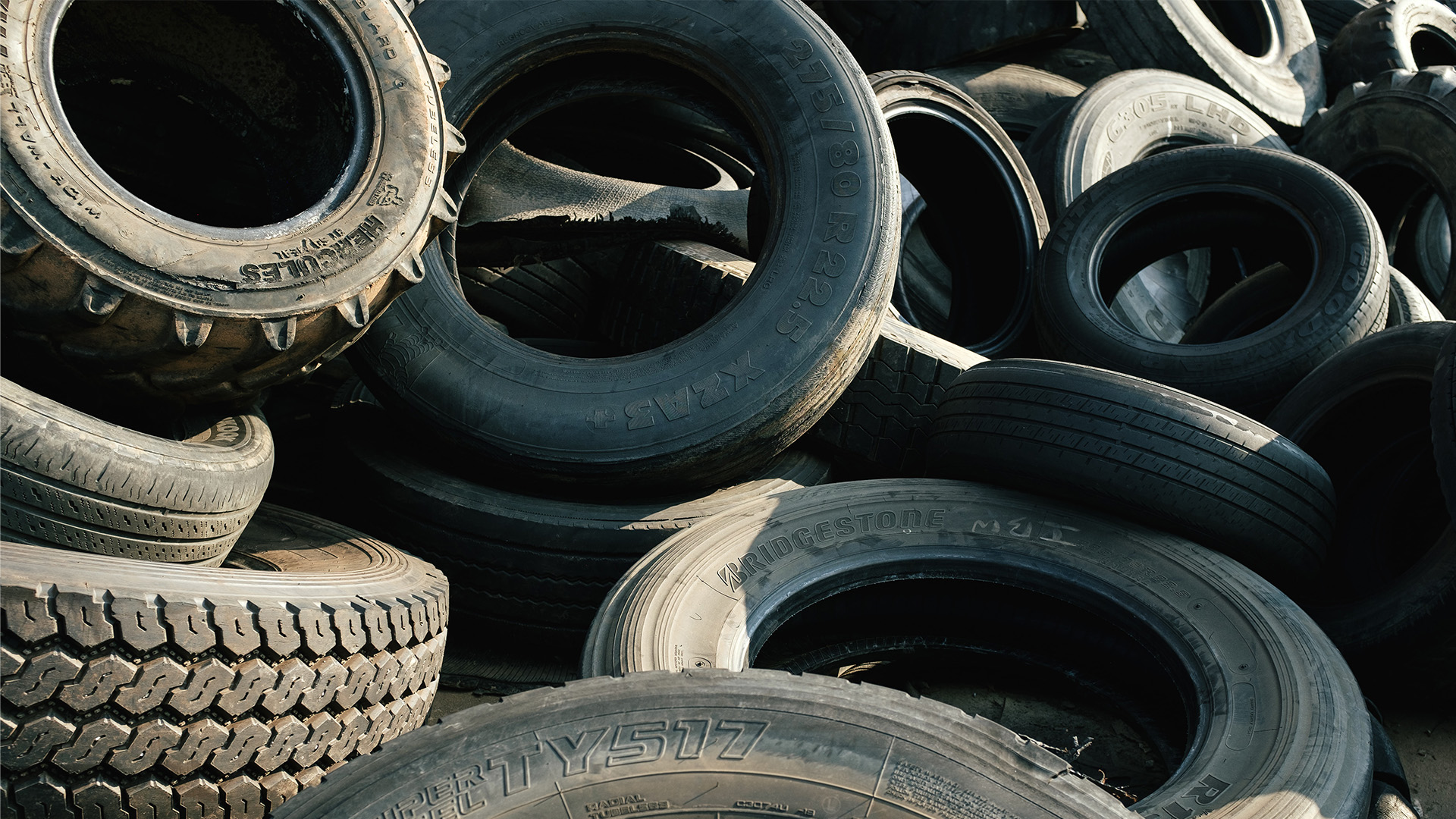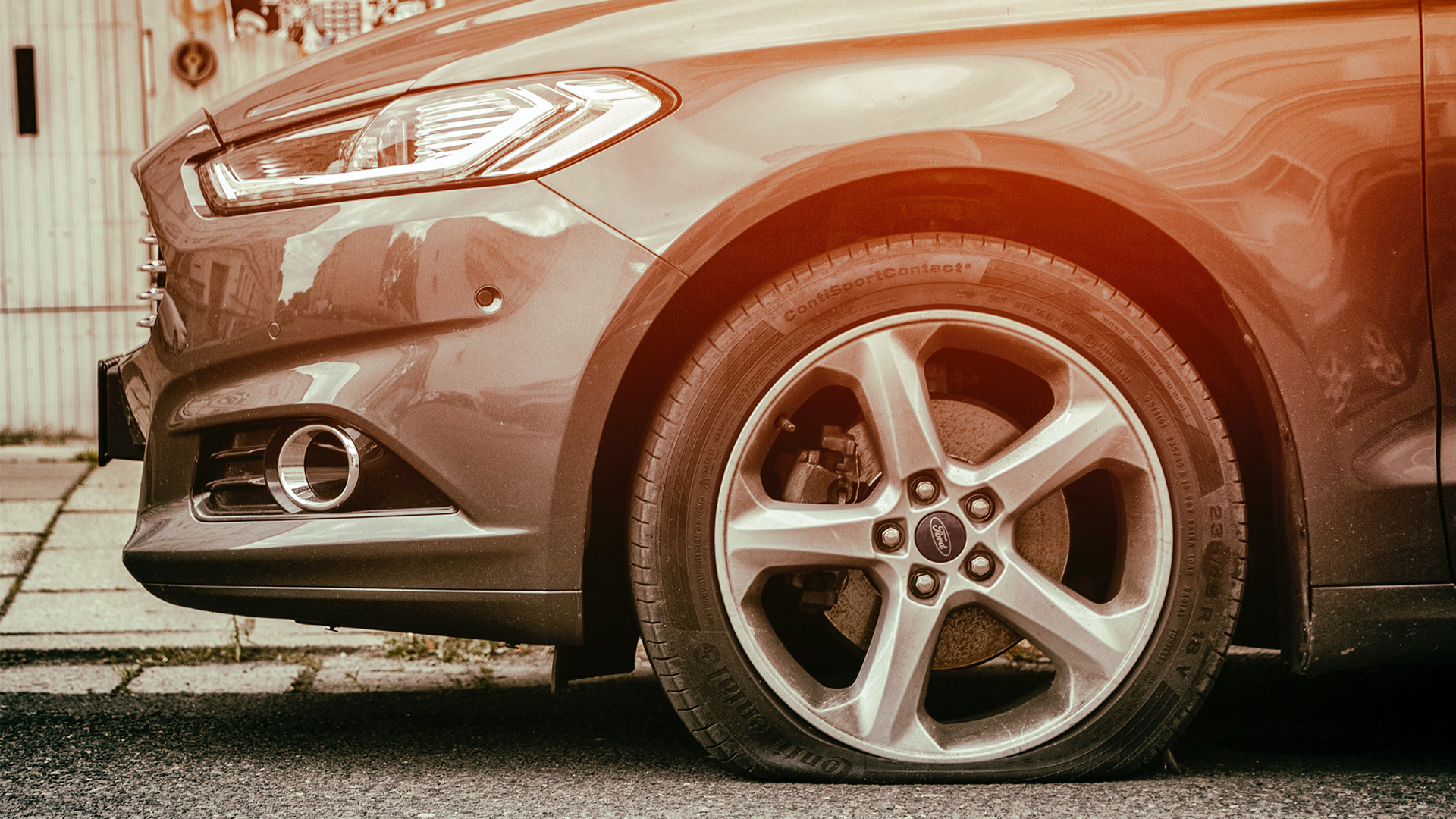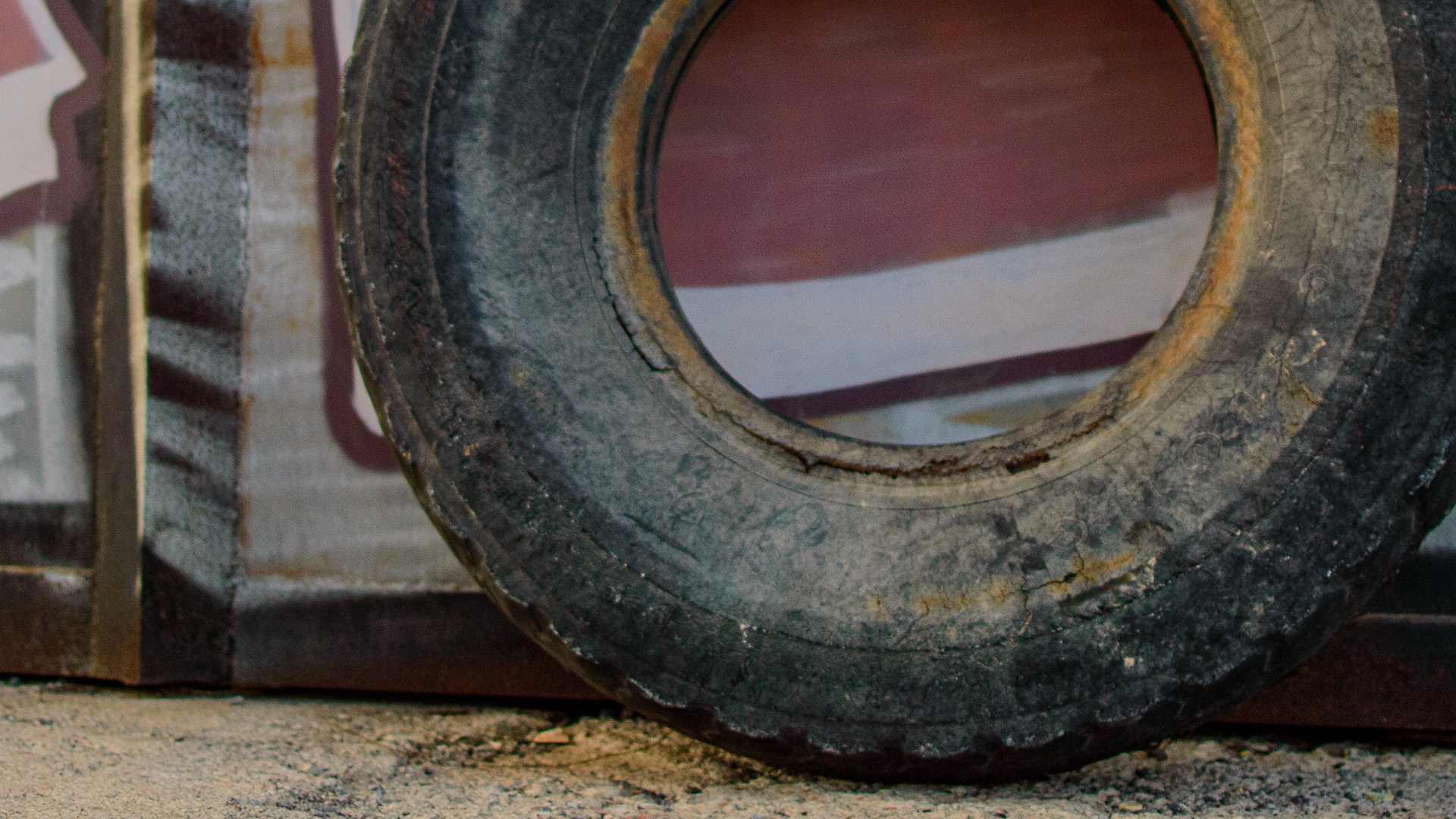Changing your zip code will clear your Pre-Approval.
Zip / postal code is required.
6 Things to Know About Bald Tires

Doing donuts in the empty Wal-Mart parking lot is not something we recommend, but if you were going to have a ton of fun doing this frowned-upon activity, we can’t stop you.
But you know what will stop you? Tires that slip and slide all over the place. Repeated stress on your rubber rims will strip away at the tread, causing them to wear down and become “bald.” And no one wants that.
The thing is, hair growth supplements won’t work to restore your tires to their former glory, and driving on bald tires can pose dangers to you and others on the road. Here are some important things to know about bald tires to help you stay safe and sound.

1. Bald Tires Are Inevitable
Kind of like balding hair, there’s not much you can do to stop bald tires from happening. Every mile you drive will wear down your tire’s treads, so eventually, they may become flattened from repeated use.
If you drive a typical number of miles every year, let’s say somewhere in the range of twelve to fifteen thousand, your tires will probably wear out in three to four years. You might also want to pay close attention if you’re driving a used car because you don’t know how long those tires have been used before coming into your possession.
Regardless, the rubber components in your tire naturally degrade over time, so tread loss is just something you’ll need to be prepared for. With that said, like the hairs on your head, the loss of tread can be accelerated through several stressors.

2. Bald Tires Can Get Worse
For one, having the wrong amount of tire pressure in each of your wheels can speed up the wear and tear on those treads. Tires without enough air to carry the vehicle are considered “under-inflated,” which can put tons of stress on each wheel. Conversely, tires with too much air are considered “overloaded,” which is susceptible to just as much stress.
Not only will you lose some necessary traction on each tire, but they’ll become more prone to failing or popping on the road. Getting a flat tire with friends in the car is one of the most embarrassing things that can ever happen to you. We beg you not to let it get to that.
You’ll also want to make sure that your tires are balanced. This is done at a mechanic’s shop using a special machine that tells the technician to add weight in specified areas to equal all four quadrants of the vehicle.
Without that, certain areas of the car will be under increased stress compared to others, which can naturally affect the treads. You can usually tell if your car is out of alignment because you’ll feel like you’re driving through an earthquake at higher speeds.
3. Driving on Bald Tires Can Put You in Danger
When it rains or snows, the treads on your tires are essential for keeping your car steady. Without tire treads, you’d slip and slide everywhere.
Your chances of hydroplaning or skidding during inclement weather increase drastically if you drive on worn or bald tires. Not only does this increase the risk of accidents, but you’ll have some hefty insurance costs if it’s discovered that your bad tires were the reason for the collision.
Bald tires are also more easily punctured because the treads can usually withstand some minor pricks from nails or glass on the road. Without that, you’re more susceptible to blowouts and flats. Treadless tires are also more likely to burst because of the high friction that occurs while driving. Treads can protect from that increased heat, so without them, you’re worsening your odds.
Again, we cannot stress how embarrassing it is to wait for roadside assistance while your friends are in the backseat.
Not to mention, bald tires can make it hard to brake correctly. Your brakes will stop your wheels from spinning, but they won’t provide traction. That’s where the treads come in. Slamming on the brakes without traction can easily lead to an unfortunate rear-end collision.

4. You Can Spot Bald Tires Before It’s Too Late
The U.S. Tire Manufacturers Association found that 35% of American drivers can’t tell if their tires are bad. Additionally, 83% of people didn’t even know how to check their tire pressure. If you’re a part of these statistics, your secret is safe with us. But let’s fix it.
A visual inspection is all it takes, as long as you know what to look for. You can eyeball your tires, and if you notice that the treads are entirely stripped away or are extremely dull, it might be time for a replacement. You can get something called a tire tread gauge to be certain, too. They’re pretty inexpensive and can help give you an accurate reading.
Newer tires also have a helpful little tool called an indicator bar. These are flat rubber bars built right onto the tire, but they’re invisible if your tires have plenty of tread. When you can clearly see the indicators, it means the tread has reached unsafe levels.
You can also try a fun method that involves using a penny. Stick one cent into the tread with the “heads” side facing you. If you can see the entirety of Lincoln’s face, your treads are too low. And honest Abe would never lie to you about your tire health.
Also, if you start to feel like your car isn’t breaking as well as usual, or you’re getting a low-traction indicator on your car’s dash, it might be a sign that you’re due for some new wheels. It never hurts to have a technician take a look -- it might seriously save you or someone else’s life.
5. Replacement Tires Can Be Expensive
Maintaining good tire health is important because getting replacements can be costly. You’ll want to try to cut down on the need for that as much as you can.
Check your tire pressure monthly. This is one of the most manageable steps towards ensuring good tire health. Also, check your alignment twice a year, and have your tires rotated every 5,000 miles. Rotation spreads wear evenly across all four tires, which can extend your tread life.
6. But… They Don’t Have to Be
Once it’s finally time to get some tire replacements, don’t feel like you need to drop hundreds of dollars all at one time. Rent a Wheel provides high-quality products and services at the lowest price possible. Saving you money and time is kind of our thing.
And you also don’t need to pay for everything right upfront. We’ve got flexible payment plans that can work for any scenario--no credit check required. Our expert recommendations will help you find what fits your budget, lifestyle, and vehicle. So you don’t need to know a thing about cars to know you’re getting the right stuff.
We’ll even ship wheels straight to your door, so you don’t need to risk driving those balding tires to the nearest store. We can even install them for a small fee. But we won’t tell, so the next time your dad comes over, you can act like you did everything yourself.
We’re Tired Out
Bald tires are just a word to describe tires that have little to no treads. And treads are pretty important -- they help you brake properly and keep you safer during rainy or snowy days.
Treads wear down naturally, so you don’t need to feel like you’re doing something wrong if it’s time for a replacement. With that said, poor tire pressure and unbalanced wheels can increase how fast your treads wear.
And this isn’t ideal because stripped tires can increase your risk of accidents and put you in danger. Not to mention, your insurance bills will be through the roof if they figure out that your bad tires were the reason for the collision.
But hope isn’t lost! You can tell if your treads are worn down by putting a penny into the treads. If you can see Lincoln’s face, it’s time for a replacement.
Bald tires will make you want to rip your hair out, but they’re routine and fixable. Just don’t spend more than you need to. Rent A Wheel has been helping people purchase new tires since 1996. We’ve got you covered.
Sources:
https://www.edmunds.com/car-maintenance/how-old-and-dangerous-are-your-tires.html
https://www.ecocenter.org/healthy-stuff/pages/wheel-balancing-101
https://www.theverge.com/2018/6/24/17490060/tire-tread-bald-safety-nhtsa